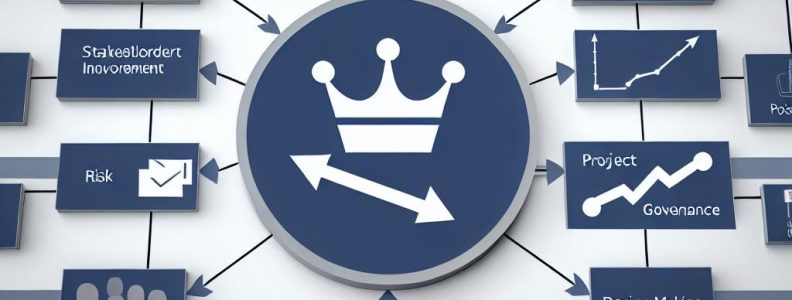The Importance of Project Governance in PRINCE2
Project governance plays a crucial role in the successful execution of projects using the PRINCE2 methodology. As a widely recognized structured project management method, PRINCE2 stands out for its systematic approach to initiating, managing, and concluding projects. A critical component of this methodology is the framework it provides for project governance, which encompasses decision-making, accountability, and resource management to steer projects toward successful outcomes.
Defining Project Governance in PRINCE2
Within the PRINCE2 framework, project governance refers to a set of defined policies, regulations, functions, processes, and responsibilities that shape the establishment, management, and control of projects. This governance structure ensures that projects remain aligned with the overarching organizational goals and deliver anticipated benefits. The importance of project governance in PRINCE2 is underscored by its focus on key guiding principles and practices that support project success.
At the heart of PRINCE2 project governance is the project board, which serves as the primary decision-making entity. This project board consists of pivotal roles, including the project executive, senior user, and senior supplier, each responsible for various aspects of the project’s success. The project executive ensures overall accountability, the senior user represents the interests of those who will benefit from the project, and the senior supplier is concerned with the quality and supply of project delivers.
The Structure of Project Governance
The structured nature of PRINCE2 project governance comprises several essential components that work together to ensure project success:
1. Clear Roles and Responsibilities: A fundamental tenet of PRINCE2 is that all participants in the project should have clearly defined roles. This clarity helps mitigate potential confusion and enhances the level of accountability among team members.
2. Decision-Making Framework: This framework is a systematic approach that is crucial for effective decision-making within a project. It provides guidance for escalating issues and making informed decisions, ensuring alignment with the project’s goals and objectives. A well-defined decision-making process enables project managers and teams to navigate complex situations efficiently.
3. Assurance and Support: Through regular checks and balances, PRINCE2 incorporates continuous support and validation processes. This ensures the ongoing viability of the project throughout its lifecycle, helping to prevent deviations from its planned course. Such assurance activities provide a mechanism to gauge the project’s health and address potential issues proactively.
Governance Themes within PRINCE2
PRINCE2 incorporates several governance themes essential to delivering structured project management. These themes are designed to foster a cohesive and consistent approach to managing projects:
Business Case: The business case is a central theme that serves as a benchmark for assessing the project’s viability and alignment with business objectives. It provides a justification for undertaking the project, identifying the benefits, costs, and risks involved in pursuing it.
Organization: This theme outlines the structure of the project, detailing the roles and responsibilities of all individuals involved. It promotes clarity and accountability by defining who is responsible for what, thus eliminating ambiguity and potential overlap.
Quality: Quality management focuses on ensuring that project deliverables align with defined standards and stakeholders’ expectations. By systematically managing quality, PRINCE2 ensures that outputs are fit for purpose and meet the prescribed criteria.
Risk: This theme emphasizes the proactive identification, assessment, and management of risks that could potentially impact project success. Effective risk management involves planning for, and mitigating, threats while also leveraging opportunities that arise during the project lifetime.
Conclusion: The Impact of Project Governance
In the realm of PRINCE2, effective project governance is an indispensable component driving project success. It establishes a framework for informed decision-making, strengthens accountability, and ensures that projects are closely aligned with organizational objectives. For those keen to gain a deeper understanding of PRINCE2 and its project management methodologies, exploring official resources and training materials can offer extensive insights.
By adhering to the principles of effective governance, projects are more likely to achieve their intended outcomes, deliver their projected benefits, and significantly contribute to organizational growth. PRINCE2’s structured governance approach not only supports the efficient management of individual projects but also bolsters the overall project portfolio management within an organization, leading to enhanced strategic alignment and improved performance outcomes.
Ultimately, the emphasis on governance within PRINCE2 ensures that projects are not managed in isolation but are an integral part of the broader organizational strategy, underpinning sustainable growth and ongoing success. The comprehensive nature of PRINCE2’s governance framework empowers organizations to undertake complex projects with a greater degree of confidence, knowing they have the necessary structures in place to navigate challenges and capitalize on opportunities.

